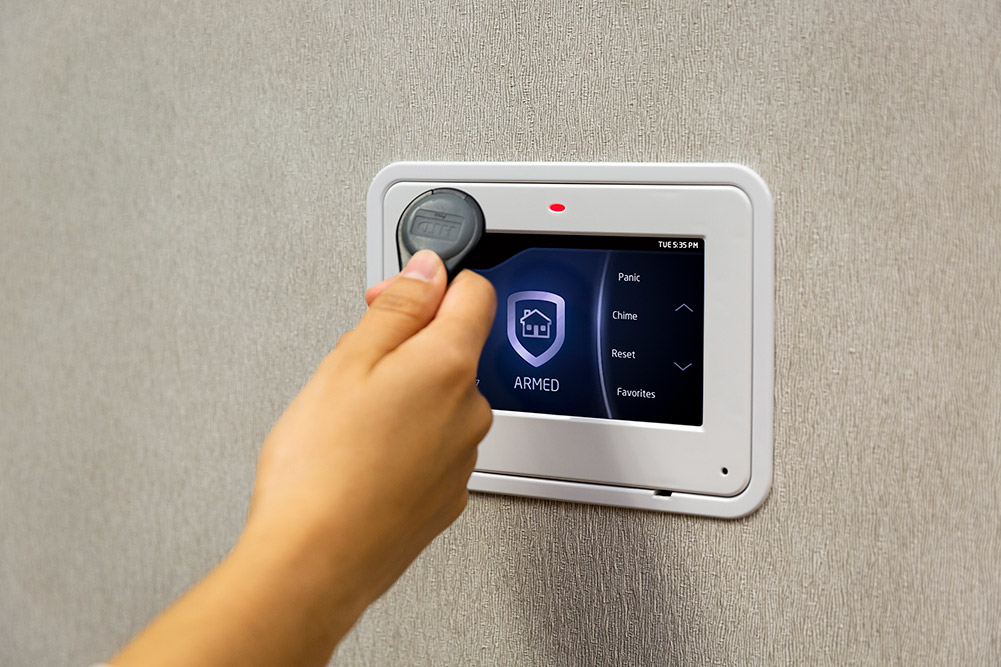Much of what people do on daily basis involves touching hundreds of items without thought – we turn to a doorknob to open a door, touch a keypad to type on a computer and push elevator buttons to close the door and select a floor. Until recently, people didn’t have to worry about these simple actions, as they didn’t pose a potential health and safety risk. Recent studies published by the National Institutes of Health have raised concerns that alarmingly high levels of common chemicals – used in thousands of household products – are absorbed through the skin, which could be a potentially serious health risk. In response to these scientific findings, the automatic industry has created a new buzzword – touchless security. The keyword here is “touchless”. The term is used to describe a variety of new security systems that detect objects touching a door, or swinging out over an elevator chute. These actions do not involve direct physical contact and therefore last longer before triggering an alarm.
According to the ADA, there are two main types of touchless security: passive and active. Passive systems monitor the movements of objects without interfering with them in any way. Active systems use sensors, often the same type as passive systems, that detect movement. While both passive and active systems are eligible for federal tax credits under the ADA, there are a number of important differences between these two technologies:
Passive systems: A passive system consists of an object sensor (typically in the form of a photoelectric cell) and a controller that detects when a person or object has been within 15 inches of the sensor. The controller then sends a signal to the elevator or building security system, which triggers an alarm.
Passive systems have the following features:
- The first control units came on the market in January of 2002 and were too large for retrofit applications. Since then, companies like Honeywell and Tyco have developed smaller products that can easily be retrofitted inside a shaft wall. These units operate from a standard 120-volt electrical supply and do not require any special installation. Generally, passive systems are less expensive than active systems, but require more extensive installation work (i.e., walls need to be cut to install inside the shaft).
- Passive systems are installed on a two-year or five-year replacement cycle for the entire building and require the security system to be active in order to operate. If no person, object, or car enters the terminal area, the unit will not trigger an alarm. To ensure that only authorized users who have access to the proper codes can pass through, active systems are required, which makes them more expensive than passive systems. These systems operate from a 24-volt electrical supply and do not require a key fob; they have a manual override that allows users to bypass the system when they encounter problems.
- Passive systems are typically less expensive than active systems.
Active systems: An active system consists of an object sensor (typically in the form of a photoelectric cell) and a controller that detects when an object has been within 15 inches of the sensor. The controller then sends a signal to the elevator or building security system, which triggers an alarm. Active systems have all the features of passive systems except for two:
- The first units came on the market in March 2007 and were too large for retrofit applications. Companies like Honeywell and DSC have developed smaller products that can easily be retrofitted inside a shaft wall. These units operate from a standard 120-volt electrical supply and do not require any special installation. Active systems are less expensive than passive systems, but require more extensive installation work (i.e., walls need to be cut to install inside the shaft).
- Active systems are installed on a three-year replacement cycle for the entire building, which requires the security system to be active in order to operate. If no person, object or car enters the terminal area, the unit will not trigger an alarm. To ensure that only authorized users who have access to the proper codes can pass through, passive systems are only required if no one is authorized to enter with a key fob; they do not require any type of physical keypad.
- Active systems are more expensive than passive systems.
As the federal government and other organizations continue to study chemicals in plastics, clothing, carpets, paints, and other products, it is likely that the definition of “touchless” will change. The systems discussed above may not always qualify as touchless until more research is completed.
Interested in reading more about touchless security? COVID-19: Moving to a Touchless Future discusses the impact the COVID-19 virus had on the future of security and the shift towards a touchless future.
![]()
If you would like liquidvideotechnologies.com to discuss developing your Home Security System, Networking, Access Control, Fire, IT consultant, or PCI Compliance, please do not hesitate to call us at 864-859-9848 or you can email us at deveren@liquidvideotechnologies.com.


Recent Comments